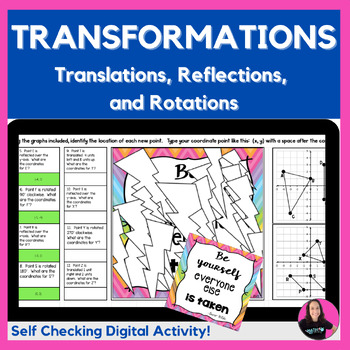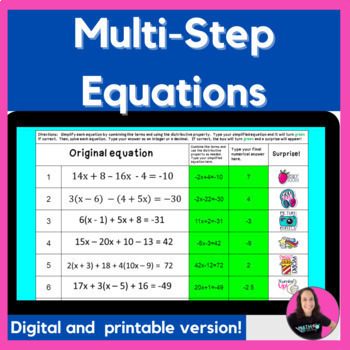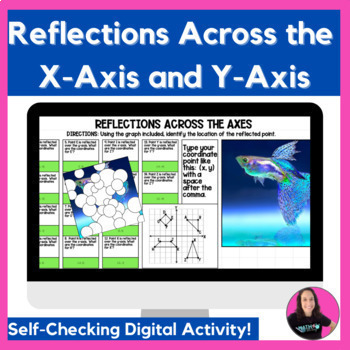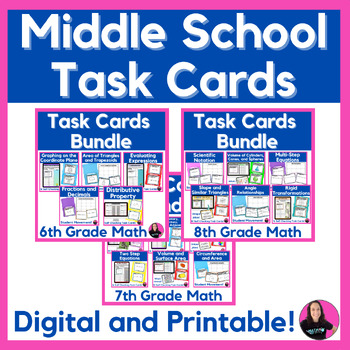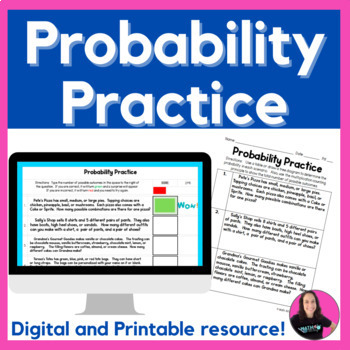Stoplight activities offer numerous benefits for differentiating instruction in the middle school math classroom. By utilizing these activities, teachers can effectively meet the varying needs of their students and create an inclusive learning environment. Let's explore some of the key advantages of using stoplight activities.
Individualized instruction
Stoplight activities allow teachers to tailor their instruction to meet the individual needs of each student. By offering three levels of difficulty - green for easy, yellow for medium, and red for the most difficult - students can choose the level that matches their abilities. This flexibility ensures that students are challenged at an appropriate level and can progress at their own pace.Clear visual representation
One of the major advantages of stoplight activities is the clear visual representation they provide. With each level assigned a color, it becomes easy for both students and teachers to identify which level each student is working on. This visual cue allows for quick and efficient monitoring of individual progress and helps teachers identify areas where additional support may be required.Don’t have colored paper? Have students use colored highlighters to add a fun element to their practice time!
Promotes Student Choice
Stoplight activities empower students to take ownership of their learning. By allowing them to choose their level or assigning levels based on their abilities, students are given the opportunity to make decisions that align with their own capabilities. This sense of autonomy fosters a positive classroom environment where students feel motivated and engaged in their learning.
Stoplight activities offer the flexibility of allowing students to choose their level or assigning levels based on their abilities. Both approaches have their advantages and can be beneficial depending on the specific needs of your students.
Allowing students to choose their level of difficulty empowers them to take ownership of their learning. It encourages self-awareness and self-assessment as students evaluate their own abilities and make decisions accordingly. By giving students the freedom to choose, you promote a sense of autonomy and responsibility, fostering a positive and engaging learning environment.
In some cases, it may be more appropriate for the teacher to assign levels based on their knowledge of students' abilities. This approach allows the teacher to make informed decisions and ensure that students are appropriately challenged. It also provides an opportunity for targeted differentiation, as the teacher can assign different levels to individual students or small groups based on their specific needs.
The decision to allow students to choose their level or assign levels as a teacher will depend on various factors such as student readiness, the complexity of the content, and the specific learning objectives. It's important to consider the unique dynamics of your classroom and the individual needs of your students when determining which approach to take.
Implementing stoplight activities in the math classroom can revolutionize the way students learn and interact with the subject. By providing individualized instruction, offering a clear visual representation of progress, and promoting student ownership, these activities set the stage for success and growth.
Stoplight activities in the middle school math classroom typically involve three levels of difficulty: green, yellow, and red. Each level represents a different degree of challenge and serves as a guide for students to choose their appropriate level or for teachers to assign levels based on student abilities.
In some cases, it may be more appropriate for the teacher to assign levels based on their knowledge of students' abilities. This approach allows the teacher to make informed decisions and ensure that students are appropriately challenged. It also provides an opportunity for targeted differentiation, as the teacher can assign different levels to individual students or small groups based on their specific needs.
The decision to allow students to choose their level or assign levels as a teacher will depend on various factors such as student readiness, the complexity of the content, and the specific learning objectives. It's important to consider the unique dynamics of your classroom and the individual needs of your students when determining which approach to take.
Implementing stoplight activities in the math classroom can revolutionize the way students learn and interact with the subject. By providing individualized instruction, offering a clear visual representation of progress, and promoting student ownership, these activities set the stage for success and growth.
Understanding the Three Levels of Green, Yellow, and Red
Stoplight activities in the middle school math classroom typically involve three levels of difficulty: green, yellow, and red. Each level represents a different degree of challenge and serves as a guide for students to choose their appropriate level or for teachers to assign levels based on student abilities.GREEN LEVEL ACTIVITIES
The green level of stoplight activities is designed to provide a solid foundation of understanding for students. It covers fundamental concepts and skills that are essential for building a strong math base before moving forward to more challenging problems.Green activities are typically less complex and involve simpler problem-solving tasks. They aim to reinforce basic knowledge and ensure students grasp essential concepts before progressing to more challenging levels.
YELLOW LEVEL ACTIVITIES
The yellow level of stoplight activities introduces additional complexity and builds upon the foundational knowledge acquired in the green level. These activities require students to apply their understanding to more advanced problem-solving situations. Yellow activities may involve multi-step problems, logical reasoning, and critical thinking. They challenge students to think beyond the basics and develop their problem-solving skills further.RED LEVEL ACTIVITIES
The red level of stoplight activities represents the highest degree of difficulty. These activities are designed to stretch students' thinking and push them to their limits. Red activities often involve complex problem-solving tasks, abstract reasoning, and advanced mathematical concepts. They require students to apply their knowledge in innovative ways and develop a deeper understanding of the subject matter.Stoplight Resources from My Shop:
CLICK HERE TO SEE ADDITIONAL RESOURCES
Stoplight activities offer an innovative and effective approach to differentiate instruction in the middle school math classroom by providing three levels of difficulty - green, yellow, and red.



.jpg)






